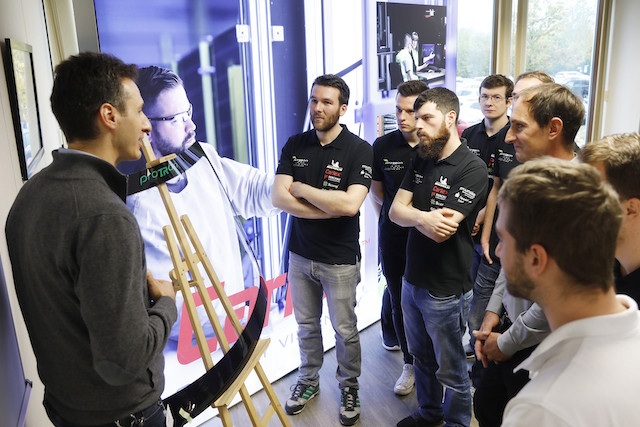When the Grevenmacher-based company caught wind of a project in Trier aimed at developing a new and innovative, environmentally-friendly urban e-vehicle, the company was on board.
During a Thursday press conference, Tobias Hinterwimmer, quality manager at Carlex, explained how he first heard about proTRon Evolution, while reading a newspaper over breakfast. proTRon, a teaching and research project at the Trier University of Applied Sciences (Hochschule Trier), is focusing on addressing challenges in the automotive industry--and Hinterwimmer was convinced his company could take an active role in contributing to it.
Focus on weight reduction
While Carlex has a history of long-term relationships with a number of car manufacturers--Audi, VW, Rolls Royce, and BMW, to name a few--the company also understood that for the proTRon project, “comfort had a different place”, said director of programe management Holger Müller. Of course, security would always be a main priority, but for this project one of the main focal points was weight reduction.
Already the Carlex team had experience with lightweight glazing for high-performance cars such as Porsche, Lamborghini and Buggati, with glass elements ranging from 3.6mm-4m, but as Müller said, “The proTRon project gave Carlex the opportunity to go beyond these limits.”
The challenge then was to determine just how lightweight the windshield could become without compromising security. The best standard windshield thickness prior had a 4.5mm thickness weighing in at 10.1kg.
Through over 60 configuration tests and more than 1,200 samples including full-sized prototypes and a range of “stone tests” with blunt and sharp edges, the team managed to scale the glass thickness down to just 2.6mm or 5.4kg. This was a weight reduction of 4.8kg, equivalent to 47%.
Final car by 2021?
The team in Trier, comprised of Dr Hartmut Zoppke and a body of students, are aiming to develop an energy-efficent e-vehicle for urban use through proTRon Evolution.
The car would offer a four-person capacity at a weight of under 550kg. While approval is ongoing in the United States, Müller expects they’ll have the certification for the windshield glass in their hands within the next few weeks.
Dr Zoppke says it’s “hard to say” when the car would finally be ready, given that students are devoting their time to the project voluntarily. But Carlex says the final car should be unveiled in public by 2021.
